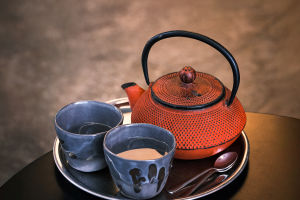Have you ever felt overwhelmed by clutter and complexity in design? If so, you might find comfort and inspiration in Nordic minimalism—a design philosophy that values simplicity, functionality, and natural beauty.
This article will take you through the key features of Nordic minimalism, its cultural roots, and why it continues to influence global design trends today.
The Origins of Nordic Minimalism
Nordic minimalism emerged in the early 20th century across countries like Sweden, Denmark, Norway, and Finland. Rooted in a cold climate and long, dark winters, this style evolved as a practical response to environmental and social conditions.
Designers focused on creating spaces and objects that bring warmth, light, and calm through clean lines and natural materials.
The movement gained momentum after global conflict, emphasizing affordability and accessibility without sacrificing beauty or quality. This made it popular both in homes and public spaces, symbolizing a democratic approach to design.
Core Principles: Simplicity and Functionality
At its heart, Nordic minimalism is about stripping away excess to reveal pure form and function. Every element in a space or object serves a clear purpose, whether it's furniture, lighting, or textiles. This practical focus creates environments that are both aesthetically pleasing and highly usable.
Neutral color palettes dominate, with whites, grays, and earth tones creating a serene backdrop. Materials like wood, leather, and wool add texture and warmth, ensuring that minimalism doesn't feel cold or sterile.
Natural Light and Space
One of the most distinctive features of Nordic design is its emphasis on natural light. Given the long, dark winters in Nordic countries, designers maximize daylight through large windows, light-colored surfaces, and open layouts. This creates a sense of spaciousness and well-being.
Minimal clutter and clean surfaces also help reflect light, reinforcing the bright and airy atmosphere. The design is not just visual—it supports mental clarity and relaxation by promoting calmness and order.
The Role of Craftsmanship and Sustainability
Nordic minimalism values quality craftsmanship and sustainable materials. Many pieces are handmade or produced using environmentally friendly methods. This reflects the Nordic respect for nature and long-lasting design.
Sustainability isn't just a trend but a core value, encouraging designers and consumers to choose durability over disposability. This approach contributes to the timelessness and lasting appeal of Nordic style.
Everyday Objects as Art
In Nordic minimalism, everyday objects are designed with beauty and purpose. Chairs, lamps, and kitchenware often feature elegant forms that are functional works of art. This merges aesthetics with utility, making daily life feel thoughtfully designed and enjoyable.
Famous designers like Alvar Aalto and Arne Jacobsen have contributed iconic pieces that exemplify this philosophy, showing how simplicity can coexist with creativity and innovation.
Influence on Modern Global Design
Today, Nordic minimalism influences interior design, fashion, architecture, and even technology worldwide. Its principles appeal to those seeking clarity in a busy world, offering spaces that nurture well-being and focus.
From sleek furniture collections to tech products with clean interfaces, the essence of Nordic minimalism remains relevant and adaptable.
How to Incorporate Nordic Minimalism
If you want to bring Nordic minimalism into your own space, start with decluttering. Choose quality over quantity and focus on natural materials and light colors. Incorporate simple, functional furniture that blends seamlessly with your lifestyle.
Remember, Nordic minimalism isn't about emptiness—it's about thoughtful design that supports comfort and harmony.
Conclusion: The Lasting Appeal of Nordic Minimalism
Nordic minimalism shows us that less truly can be more. By combining simplicity, function, and natural beauty, it creates spaces and objects that inspire calm and joy.
Have you experienced Nordic minimalism in your life? What elements do you find most appealing or challenging? Share your thoughts—I'd love to hear how this design philosophy resonates with you!


